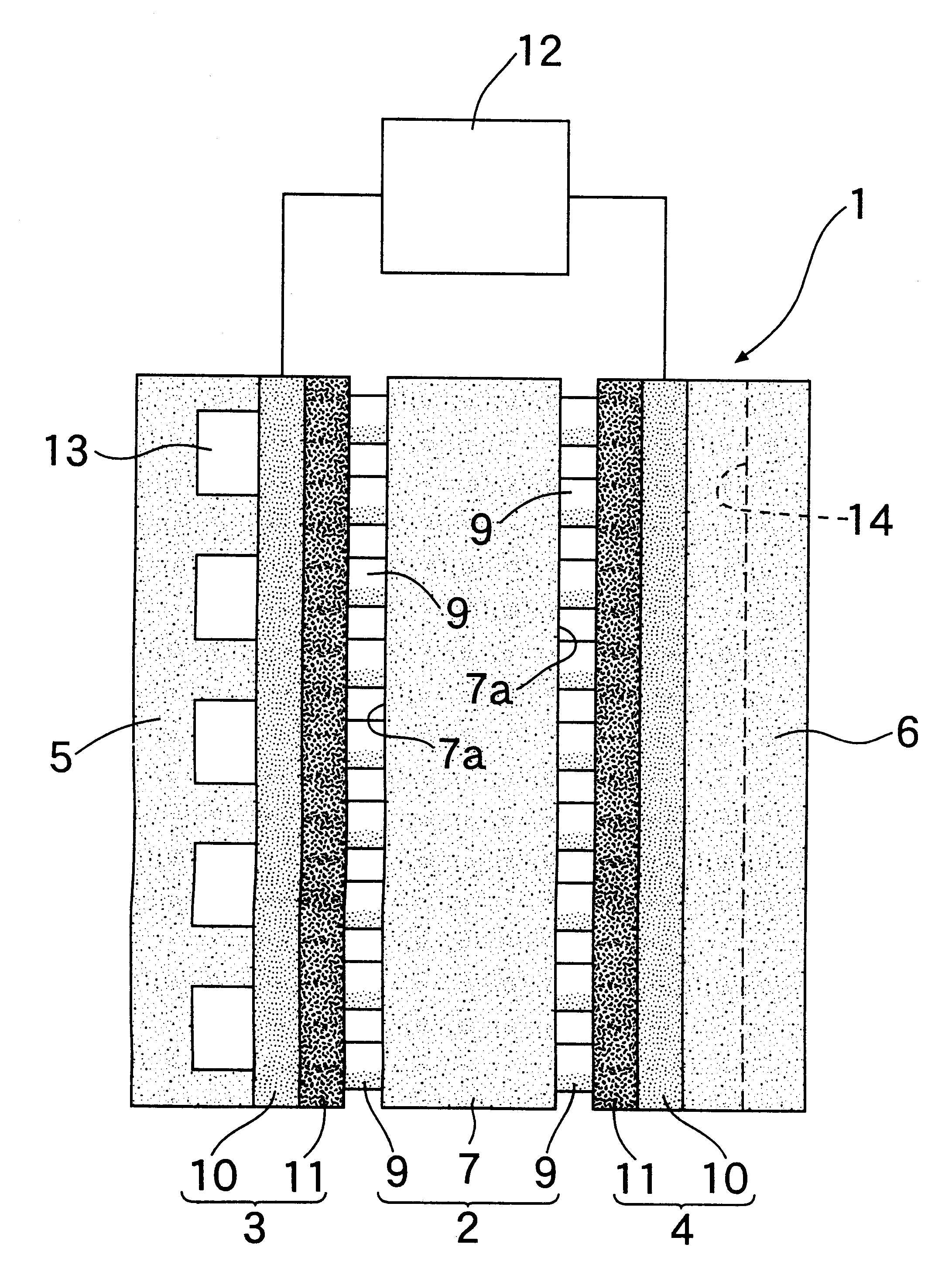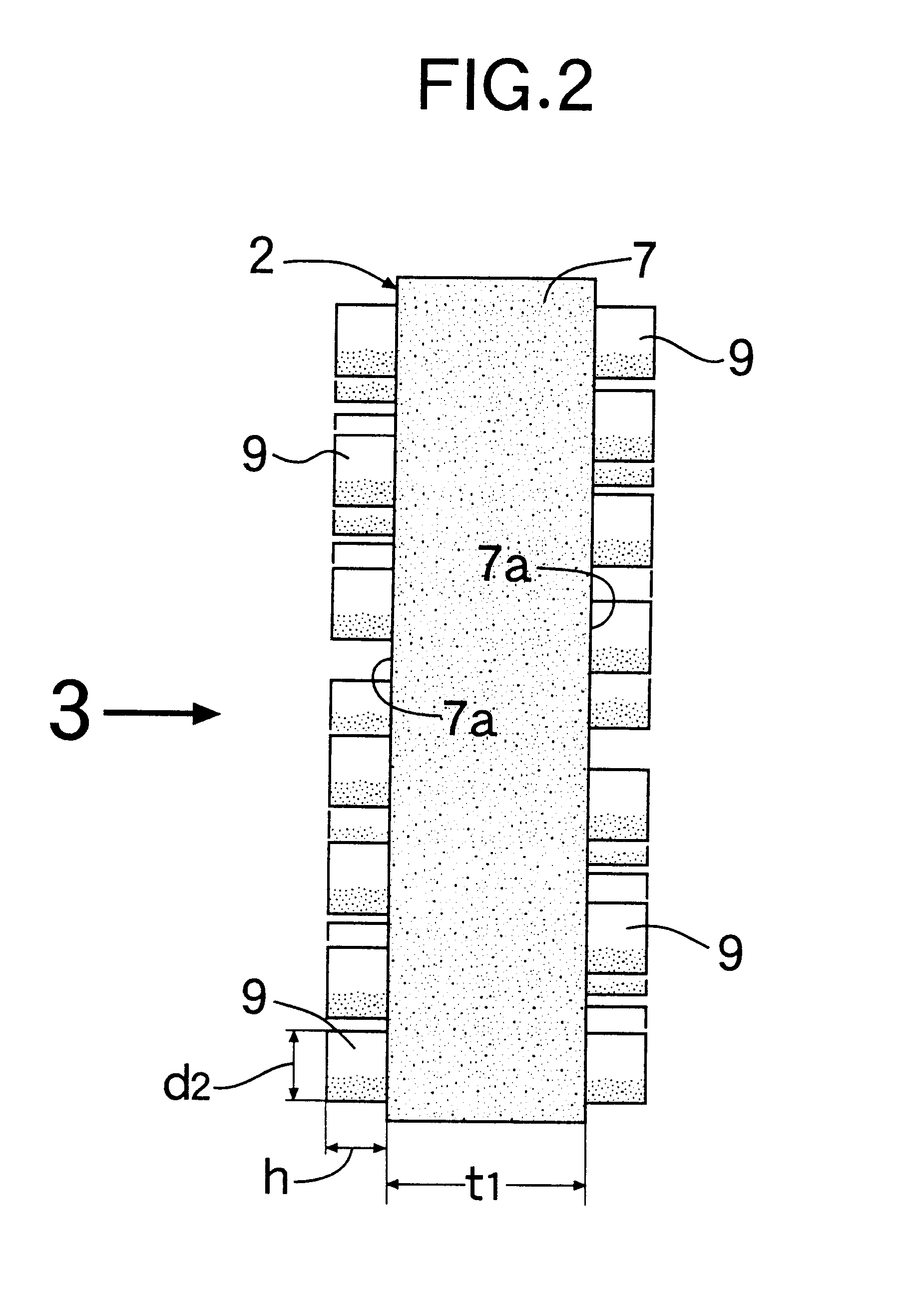Active solid polymer electrolyte membrane in solid polymer type fuel cell and process for the production thereof
a solid polymer and electrolyte technology, applied in the direction of cell components, final product manufacturing, sustainable manufacturing/processing, etc., can solve the problems of low power generation ability of the fuel cell, degraded power generation ability, and waste of expensive precious metals
- Summary
- Abstract
- Description
- Claims
- Application Information
AI Technical Summary
Benefits of technology
Problems solved by technology
Method used
Image
Examples
embodiment ii
In FIGS. 6 and 7 a cell unit 1 forming a solid polymer type fuel cell comprises an active solid polymer electrolyte membrane 2 (hereinafter in this section termed an active electrolyte membrane), an air electrode 3 and a fuel electrode 4, each of which are in close contact with the surfaces on both the sides of the above-mentioned active electrolyte membrane, and a pair of separators 5, 6 which are in close contact with the above-mentioned two electrodes 3, 4 respectively.
The active electrolyte membrane 2 comprises a solid polymer electrolyte membrane 7 (hereinafter in this section termed an electrolyte membrane) having a thickness to which satisfies the relationship 5 .mu.m.ltoreq.t.sub.1.ltoreq.200 .mu.m, and a plurality of precious metal catalyst particles 9 which are supported inside the surface layers 7b of the aforementioned electrolyte membrane 7 by ion exchange and distributed uniformly throughout the inside of the surface layer 7b thereof. The thickness t.sub.2 of the surfa...
PUM
| Property | Measurement | Unit |
|---|---|---|
| thickness t2 | aaaaa | aaaaa |
| crystallite diameter d1 | aaaaa | aaaaa |
| height | aaaaa | aaaaa |
Abstract
Description
Claims
Application Information
 Login to View More
Login to View More - R&D
- Intellectual Property
- Life Sciences
- Materials
- Tech Scout
- Unparalleled Data Quality
- Higher Quality Content
- 60% Fewer Hallucinations
Browse by: Latest US Patents, China's latest patents, Technical Efficacy Thesaurus, Application Domain, Technology Topic, Popular Technical Reports.
© 2025 PatSnap. All rights reserved.Legal|Privacy policy|Modern Slavery Act Transparency Statement|Sitemap|About US| Contact US: help@patsnap.com



